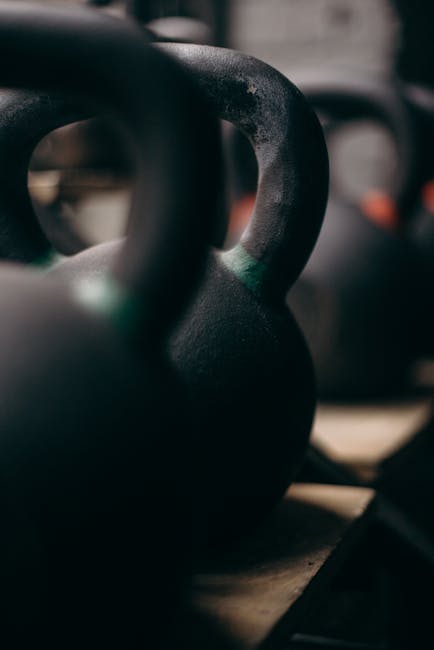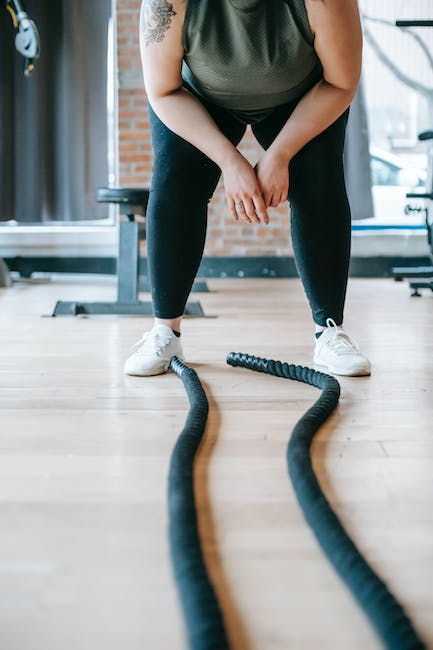Are you tired of feeling like a floppy, uncoordinated jellyfish every time you hit the gym? Are you ready to take your lifting game to the next level and become the Hercules of the weight room? Well, my friend, it’s time to talk about one of the most powerful weapons in a weightlifter’s arsenal: the weight lifting belt. But don’t be fooled by its simple appearance – this is not just any old accessory. Understanding the intricacies of a weight lifting belt can spell the difference between a strong core and a serious injury. So buckle up, buttercup, we’re about to dive into the wild and wonderful world of weight lifting belts.
Contents
- 1 1. Introduction: The Importance of Weight Lifting Belts
- 2 2. The Anatomy and Function of Weight Lifting Belts
- 3 3. Types of Weight Lifting Belts and When to Use Them
- 4 4. Proper Usage and Maintenance Tips for Weight Lifting Belts
- 5 5. Purchasing a Weight Lifting Belt: What to Consider and Where to Buy
- 6 A Belt to the End
1. Introduction: The Importance of Weight Lifting Belts
Alright, let’s get real for a second. We’ve all been there – hitting the gym, picking up some weights, feeling like a total boss… only to have that pesky lower back pain creep in and ruin our gains.
That’s where weight lifting belts come in, folks. They’re like a trusty sidekick, helping us lift heavier, push harder, and feel more confident doing it.
- First and foremost, weight lifting belts provide support for our lower backs. They help us maintain proper form and prevent unnecessary strain on our backs.
- But that’s not all – these babies also increase intra-abdominal pressure, giving us a stronger core and helping us push through those tough reps.
- And let’s be real, they make us look pretty darn cool. I mean, who doesn’t want to feel like a powerlifter while doing bicep curls?
So if you’re serious about weight lifting, it’s time to invest in a good quality lifting belt. Trust me, your back (and your gains) will thank you.

2. The Anatomy and Function of Weight Lifting Belts
Weight lifting belts, what an interesting piece of equipment, huh? It’s like having a tiny superhero around your waist, always ready to lend a hand when you’re lifting heavy. But, have you ever wondered about the anatomy and function of these beauties? No? Well, let me enlighten you.
First things first, let’s talk anatomy. The weight lifting belt is made up of four main parts: the buckle, the tongue, the strap, and the pad. The buckle and tongue serve the same purpose as your average belt, keeping the strap in place. However, the strap and the pad are what make the weight lifting belt so special. The strap is made of a sturdy material, usually leather, that wraps around your waist. The pad, located in the back of the belt, is what provides support to your lower back while lifting. It’s like having a pillow there to cushion the blow.
Now, let’s move on to function. The weight lifting belt is not meant to be worn all the time, despite what some gym-goers may believe. It’s meant to be worn during heavy lifting to provide support to the lower back and core muscles. The pressure created by the belt against your abdominal wall helps to increase intra-abdominal pressure, essentially creating a stable environment for your spine. This stability allows you to lift heavier weights and reduce the risk of injury. However, it’s important to note that the weight lifting belt is not a magic fix. Proper technique and form are still crucial when lifting heavy.
In conclusion, the weight lifting belt may seem like a small accessory, but it plays a vital role in keeping us safe during heavy lifting. So, the next time you see someone wearing one at the gym, give them a nod of understanding. They have a tiny superhero around their waist, protecting them from the perils of heavy lifting. Just make sure they take it off before they leave the gym, nobody wants to look like they have a pillow around their waist all day.
3. Types of Weight Lifting Belts and When to Use Them
So, you have finally decided to add some weightlifting belts into your workout routine? Congratulations, you are one step closer to becoming a certified gym rat. But wait, before diving into the world of weightlifting belts, you need to know the types and when to use them.
Firstly, we have the Classic Belt. You know, the one that looks like a regular belt you wear to work? It’s made up of leather and has a buckle, and you tighten it around your waist to support your lower back. Use it when you are squatting or deadlifting heavier weights, and you don’t want to damage your spine. Make sure that the Classic Belt is snug because, otherwise, it’s just a regular belt, and you’ll look silly wearing it in the gym.
Then, we have the Lever Belt, my personal favorite. It has a buckle system but operates like a clamp, enabling you to adjust the tightness to your personal preference. It supports your core, and you can use it when lifting heavy weights that the Classic Belt might not be able to handle. Also, make sure to let out a grunt or two when putting on the Lever Belt because it shows your fellow gym-goers that you’re serious and committed.
4. Proper Usage and Maintenance Tips for Weight Lifting Belts
Believe it or not, folks, but there’s a right and wrong way to use your weight lifting belt. Shocking, I know! But don’t worry, I’m here to give you some tips on proper usage to prevent any potential injuries.
First things first, make sure you’re wearing your belt above your hips. I know, I know, the temptation to wear it lower and look like a cool, hipster weight lifter is strong, but trust me, it’s not worth sacrificing your form. So, resist the urge and buckle up above those hips.
Next up, make sure the belt actually fits you. Just like how your shoes need to be the right size for your feet, your weight lifting belt needs to fit you snugly. If it’s too loose, it’s not going to provide any support. And if it’s too tight, well, you might not be able to breathe. So, as much as you might want to show off your new six-pack, make sure you’re not squeezing yourself into a belt that’s too small.
Maintenance is also important, people. You can’t just wear your belt every day and never clean it. That’s like wearing the same sweaty gym clothes for a week straight – gross. So, here’s what you need to do:
– After each workout, wipe down your belt with a damp cloth to get rid of any sweat.
– Every few weeks, wash your belt in lukewarm water with a mild detergent. Make sure to rinse it thoroughly and let it air dry completely before using it again.
– And finally, don’t leave your belt sitting in direct sunlight or near a heat source. That’s like leaving a vampire in the sun – it’s not going to end well.
So there you have it, folks. A few tips on proper usage and maintenance of your weight lifting belt. Keep these in mind and you’ll be well on your way to lifting like a pro. Or at least a slightly less clumsy amateur.
5. Purchasing a Weight Lifting Belt: What to Consider and Where to Buy
Alright, folks, it’s time to talk about the ever-important accessory in the world of weightlifting: the weight lifting belt. This handy dandy tool can assist you in hitting new personal records and preventing injury. But before you go and buy the first belt you see, let’s discuss what you should consider and where to find it.
First things first, fit is crucial. You don’t want to end up with a belt that’s too big or too small, otherwise, it’ll just be useless. Measure your waistline and allow a little wiggle room for the belt. Also, take into consideration the thickness of the belt. A thicker belt will provide more support, but may not be as comfortable. Ultimately, it’s up to your personal preference.
Next, material matters. Leather is a traditional and popular option for weightlifting belts due to its durability and stiffness. However, if you’re looking for something more eco-friendly or vegan, there are options made of materials such as recycled rubber or synthetic materials. Just keep in mind that these may not be as sturdy as a leather belt and may not last as long.
Now, onto the fun part, where to buy. You can head to your local sports store, but why not spice it up a bit and get a custom belt? There are a plethora of online shops that offer personalized designs and even allow you to add your name or nickname. It’s a great way to show off your personality and intimidate your competition. Plus, imagine how much cooler it’ll be when your lifting buddies see your custom belt and they all say “ooh, ahh” in unison.
In the grand scheme of things, a weight lifting belt isn’t a must-have for all lifters, but it’s definitely a worthwhile investment for those trying to hit new goals and prevent injuries. Remember to consider fit and material before purchasing and don’t be afraid to have a little fun with it. Happy lifting, folks!
A Belt to the End
Well, congratulations! You just made it through an entire article about weight lifting belts. Are you feeling buff and knowledgeable yet? Just remember, a weight lifting belt isn’t a magic tool that will make you suddenly ripped, but it can help prevent injuries and give you a little extra support. So strap one on and lift heavy, my friend. And if anyone asks why you’re wearing a belt, just tell them you’re taking fashion cues from pro wrestlers. That’ll show ’em who’s boss.








Leave A Comment